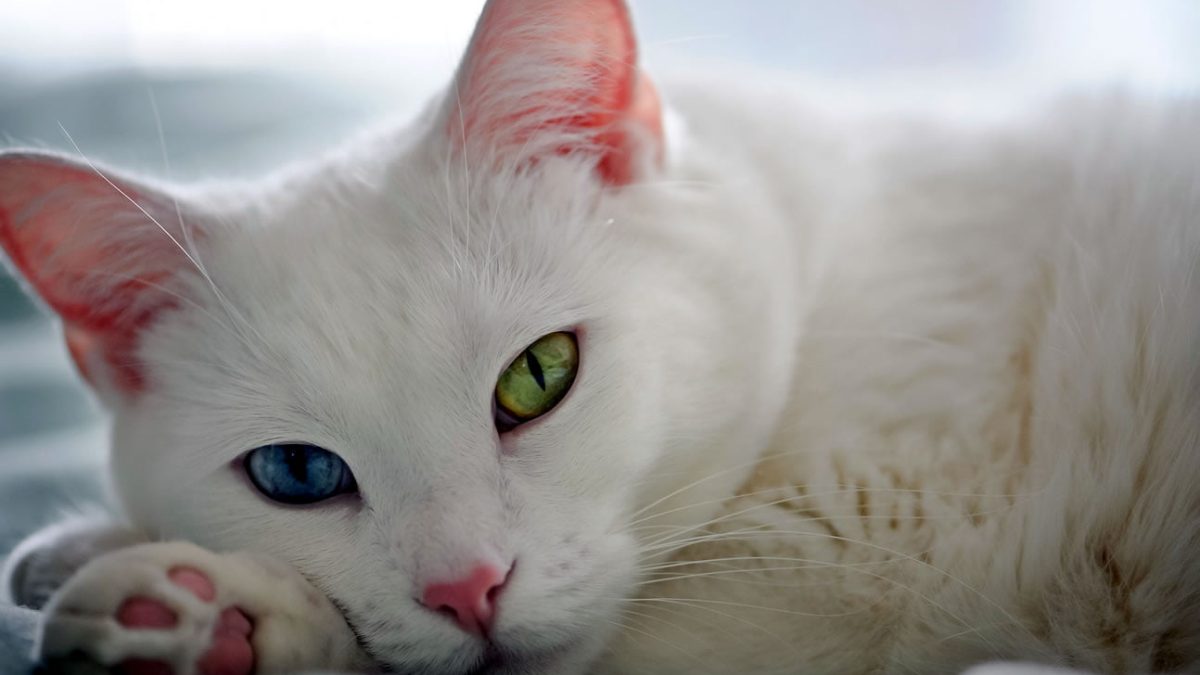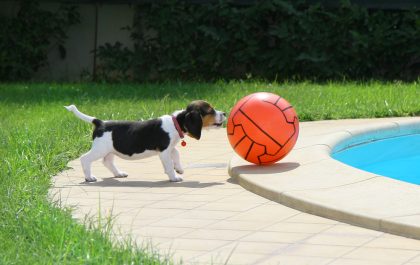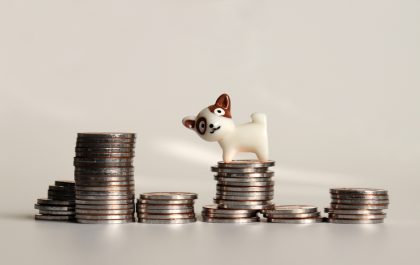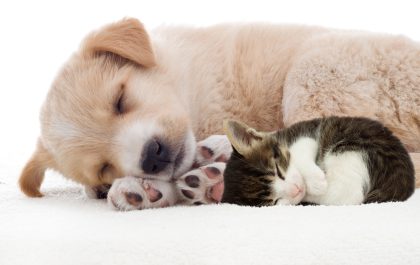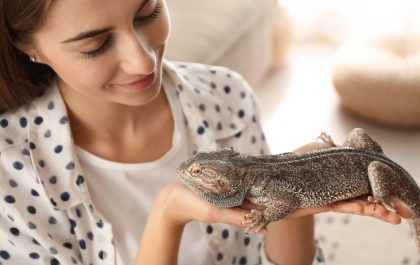The first evidence of cats being domesticated is in archaeological remains as early as 2500 BC in Egypt where literally hundreds of thousands of cats have been found mummified. Cats were also known in China from 1000 BC and later in Japan People esteemed the cat as a rodent officer protecting the silk worm industry, the granaries and old manuscripts from damage by rats Egyptian paintings and Pompeian relics depict cats which were either striped or spotted tabbies. The Egyptians even made gods of cats and all sorts of magical powers were attributed to them So much so that by the Middle Ages. the Church in an attempt to bring the people back to God and to suppress the interest in magic, persecuted both cats and their owners This may account for the way bubonic plague swept through Europe and Asia in the mid-fourteenth century, because there were very few cats left to Keep down the rats which brought the plague with them wherever they went By the end of the eighteenth century, the value of the cat in keeping down vermin was once again realized and the cat was re-instated in its place by every domestic hearth symbolizing the perfect household pet It was not until the end of the nineteenth century that interest in the cat. to the extent of holding cat shows, began. People were beginning to realize the differences between the coat colours and patterns As the science of genetics was formulated and grew so cat breeders became interested in ‘creating’ new breeds and new colours or perfecting the ones that they had and today we can change head shapes eye colour hair type and coat colour, and even perpetuate deformities’ No matter what we do howover: the cat will always be a cat It will never be anything else. And what a blessing that is for there can hardly ever nave been anything so worth preserving as the cat – a perfect piece of creative genius If it disappeared, the world would be a poorer place.
Health and stamina
It is pointless to start a breeding programme with anything but very healthy stock. Any weakness in constitution will be doubled up in a line breeding programme, therefore your foundation stock must be the best that you can afford both of its breed and in health.
Sex and colour
The cat has 38 chromosomes consisting of 18 identical pairs and one pair that is different. The different pairs is for the sexes, male and female, and nature provides for equal quantities to be born although in any one litter there may be more males than females or vice versa. Some breeds seem to have a preponderance of male kittens, and some coat colours are linked to sex. so that whereas you can only have males that are black, brown, blue. Lilac, red or cream (Cin solid or other coat patterns), females can be black. brown blue lilac, red, cream,. tortoiseshell or blue-cream, and their dilutions In other words all the tortoiseshell cats and the tortie-and -white (calicos) cats are always female, in all the colours and their dilutions Occasionally a male cat will be born with tote (blue-cream etc ) colouring, which is achieved by the cat having an extra chromosome, but the cat in this case will usually be sterile.
Genes
Genes determine the characteristics of the cat in every field, and there are literally thousands of genes on every chromosome all because they were geographically confined and inbreeding intensified the characteristics. Manx is a recessive gene: folded ear is a dominant gene, and the polydactyl gene is also dominant over normal toes.
Coat colour and pattern
Whilst there are many coat colours and patterns inherent within the cat species, it is doubtful whether they would all have come to light if left to themselves, with random matings of the cat population, because some colours are dominant over others and the recessive colours would always have been at a disadvantage, unless once again the line breeding came about by being confined within a geographical location. This could have happened with the Korat and the Siamese. However, now that breeders are beginning to understand about selective breeding, all possible colours can be produced within all coat patterns. and in each body and hair type or mixture of types. What constitutes a breed therefore is becoming more and more uncertain. In view of this experimental age, it is evident that the Governing Bodies of the Cat Fancies worldwide will have to get together and reassess the whole situation, finalizing eventually a new system of classification that will be acceptable to all, and based on sound principles of genetics rather than on whim and opinion.
Eyes
It is thought that most cats in temperate regions had hazel eyes- a good camouflage for them in the undergrowth: this leads one to suppose that the red and cream having their specific location on the chromosome There are genes not only for coat colour and coat pattern but for temperament eye shape and colour body type hair type reproduction and every other characteristic. During cell division the gene reproduces itself exactly with great precision. When very occasionally over perhaps hundreds of years a gene does not reproduce itself exactly or misplaces itself to a different location on the chromosome the gene is said to be a mutant and the resulting kitten a mutation
Body types
There are two basic body types, the cobby shape with a round skull typified by the show quality Persian and the Exotic Shorthair: and the finer boned. lithe slender type with a wedge-shaped head. as seen in the Angora and Balinese longhairs and Siamese. Colour-point and Oriental shorthairs. Every other cat is somewhere in between Some are found as natural breeds’ from various geographical locations, others are deliberate attempts by breeders to create new breeds by mating different types together to produce something combining features from both.
Occasionally a new type has occurred as a natural mutation and we get the Manx cat without a tail or with various degrees of shortness of tail, the Japanese Bobtail. with a different kind of curled tail, the folded ear cat (the Scottish Fold), which was a natural mutation in Scotland as recently as 1961 and the polydactyl cat, with extra toes. With the exception of the Scottish Fold, these other mutations occurred so long ago that no one now remembers the dates but they were perpetuated coloured cats with amber eyes originally came from desert regions, where their colouring would have added to their chance of survival. On the show bench however, other more dramatic colourings are sometimes desired by the fancy breeders; red cats with green eyes are produced, for instance and very attractive they are. The science of genetics has made this possible.
Temperament
The genes for temperament vary with the different breeds and it is noticed that when one breed is crossed with another the resulting breed’ has an intermediate temperament as well. Thus when some of the Siamese breeds are crossed with longhairs, the resulting Himalayan coloured longhairs are less aggressive than the original Siamese, less vocal and less destructive. It is interesting that temperament can be manipulated in this way along with other features.
Head shape
During this century the Persian cat has been changed from a long-nosed cat, with consequent long tongue, which it needed to cope with its long fur, to a shod-faced cat, with consequent short tongue, which is not nearly so efficient for its own grooming. The reverse has happened with the Siamese. This started life at the end of the nineteenth century as a short, round-faced animal, judging by early pictures of cats on the show bench. Selective breeding has now produced a very long, racehorse type of head with very long tongue, more than adequate for grooming its very short coat. Fashion in each case has dictated these changes and some may think that it was not always in the best interests of the cat. In the case of the Peke-faced Persian for instance, the shortness of nose in extreme cases produces breathing problems, blocked tear ducts and even difficulty in feeding. New breeders should beware of experimental breeding and concentrate on improving not only the looks but the practicality of each cat within the various breeds.
Feature fixing
The way to fix a feature that you desired, is to take a female that has one or more of the features you wish to fix and mate her to a male with similar features or others that you wish to introduce into your own strain.
Out of the resulting kittens you discard(as breed stock, not as potential pets) those not showing the desired features and mate the others together or back to their parents. Again you keep the ones showing the desired features and sell off the others as pets. When the next generation is old enough, you mate again with each other or back to the foundation stock In this way a strain is built up all carrying the desired features. By discarding the others, some of these features will become ‘fixed and will appear in all future offspring. Care must be taken here not to introduce outclasses, which will undo all the work you have built up. In this connection it is better to have more than one programme going at the same time, then cross over to the other strain built up similarly either by you or by another breeder attempting the same programme. This is not always as easy as it sounds because you sometimes come across a feature that is different because it is recessive or sex-linked. The red colour in cats for instance, is sometimes sex-linked and the dilute colours are recessive to the dominant colours
Dominance
In considering a dominant with a recessive feature, if both cats show the dominant feature, at the offspring will also show the dominant feature. If both cats display the recessive feature, all the offspring will display the recessive feature. If a cat with a recessive feature is mated to a cat with a dominant feature and all the kittens show the dominant feature, it is probable that the dominant cat is not carrying the recessive feature However, if the offspring are half displaying the dominant feature and half displaying the recessive feature, this will prove that the cat displaying the dominant feature also carries the recessive gene. This will be a very important discovery for future matings with that cat.
Summary
So we see that every characteristic of the cat is capable of manipulation today and it is to be hoped that today and tomorrow’s breeders will be very responsible in their creative skills. Let us aim for beautiful cats that are also practical. Do not let us perpetuate monstrosities and deformities or ugly cats. The cat deserves to be the wonderful creature it is, in all its various beautiful forms.
Cat Genetics FAQs
Coat colors and patterns can be used as one of several factors to identify different cat breeds, but they are not the only criteria. Other factors, such as body shape, size, and temperament, are also important.
Coat colors and patterns in cats are determined by a combination of genes that control the production and distribution of pigments in the hair.
Breeding can affect the health of cats in both positive and negative ways. Responsible breeding can help reduce the incidence of genetic diseases, while irresponsible breeding can increase the risk of health problems.
Cat owners can use knowledge of cat genetics to make informed decisions about breeding, health care, and nutrition. By understanding the genetic basis of different traits and diseases, cat owners can take steps to promote the overall health and wellbeing of their pets.
The study of cat genetics has evolved over time as new technologies and research methods have become available. Today, scientists are able to explore the genetic basis of many feline traits and diseases in greater detail than ever before.
Cat genetics refers to the study of the heredity of traits in cats, including coat colors and patterns, eye color, and genetic diseases.
Some common coat colors and patterns in cats include black, white, tabby, calico, and tortoiseshell.
Some genetic diseases that can affect cats include polycystic kidney disease, hypertrophic cardiomyopathy, and progressive retinal atrophy.
Some practical applications of cat genetics research include the development of genetic tests for inherited diseases, the identification of genetic risk factors for health problems, and the development of breeding programs to improve the health and welfare of cats.
The unique traits that make cats special are determined by a variety of genetic and environmental factors. These factors interact to produce the distinctive characteristics that we associate with different cat breeds and individuals.

